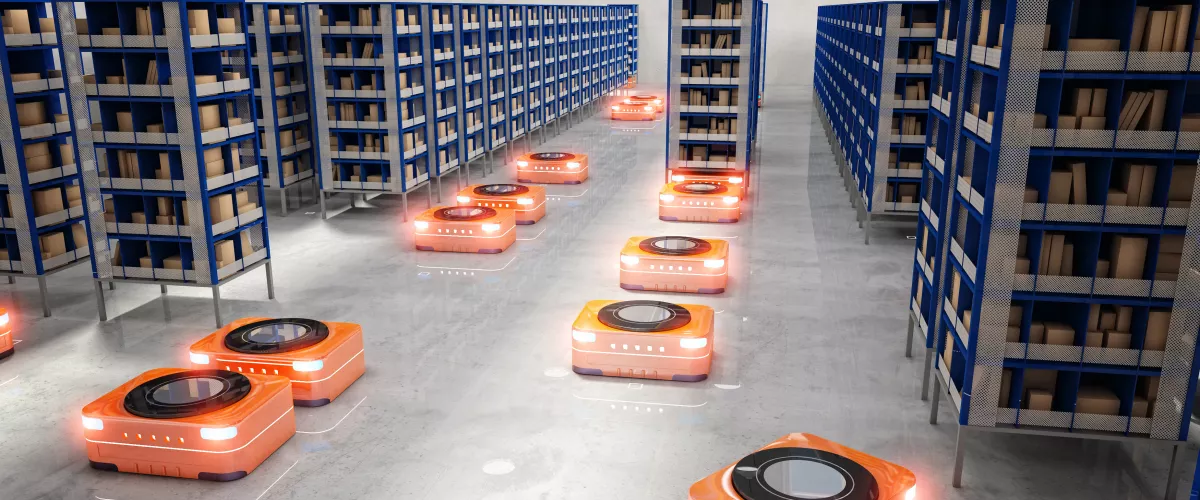The rise of robotics

Robots are having their time in the sun in this year of digital transformation – and they’re coming to warehouse distribution centres near you.
There is a new breed of robot called Autonomous Mobile Robots (AMRs) that are smarter, faster, more cost efficient and more flexible than all that’s come before.
Toll’s Sam Eid, head of business development and supply chain solutions, Asia, says AMRs have become popular this year, when everything’s changed so quickly.
“AMRs are much cheaper than traditional highly automated system, and their performance outputs are good,” Sam says.
“They generate good productivity and a quicker return on investment than traditional fixed automation systems and are more agile – you can pick them up and move them from one distribution centre to another,” he says.
Getting better all the time
And things will only get better for robots (and those who employ them) as they come face-to-face with new technologies, such as artificial intelligence (AI), machine learning (ML), cloud computing, and 5G.
One example of ML is Collaborative Robots (COBOTS) that are teaching themselves how to pick up a ball that’s rolling around in a tote. This concept is known as ‘edge-processing’ where technology is embedded at the point of use.
“In the past you needed to work out how best to pick up that item and do the programming. Now the system is working out how best to pick up that item itself and then pass the information onto other robots” said Sam.
He forecasts the convergence of these technologies will bring exciting developments to the logistics industry as the future unfolds.
Two years yonder
Although our sense of the future has changed in 2020, says industry strategist Richard Ryan from global digital supply chain platform provider, Blue Yonder.
“The market is going through dramatic transformation,” says Richard. “It’s difficult to think about two years from now when we are still experiencing the impacts of COVID-19. However, COVID-19 has accelerated years of development of e-commerce and we, as humans, are expecting more from our supply chains.”
Toll has been working with Blue Yonder for the past decade in a partnership that seeks to implement warehouse management systems with the latest innovations.
“This is where robotics comes in. They can follow a person in a warehouse and increase the picking average by 300%. They can save time and labour and reduce the number of people needed in the warehouse – which is important now for social distancing. If it’s Christmas, you can deploy more, and then you can very easily move them from one warehouse to another as consumer demand shifts,” Richard says.
“What you have is a series of robots that are not there to replace the human, they are there to augment the human.”
Choose your own adventure
Sam says it’s also not about replacing fixed automation warehousing, which is still the best solution for extremely high volumes and service levels, and reduces costs over the longer term. The demand for these solutions is still growing.
But right now, in this era of uncertainty, the AMRs lower upfront investment and 12-week lead times make them a good go-to, he says.
The future of warehousing is a dynamic one. It means we will be integrating these technologies in a custom-fit approach, which includes fixed automation, flexible automation and labour.
“It’s often a trade-off between flexibility, cost and service,” Sam says. “Toll has a consultancy service business to help clients find their point of optimality. We do a lot of hypothesis testing and benefit analysis to help our clients achieve their best solutions.”
And for some, this might mean unwrapping a robot or 100 for Christmas.
In the past a human would analyse, solve and program the system. Now the system works out how best to pick up the ball by itself.
This is just the glimpse into the future of warehousing.